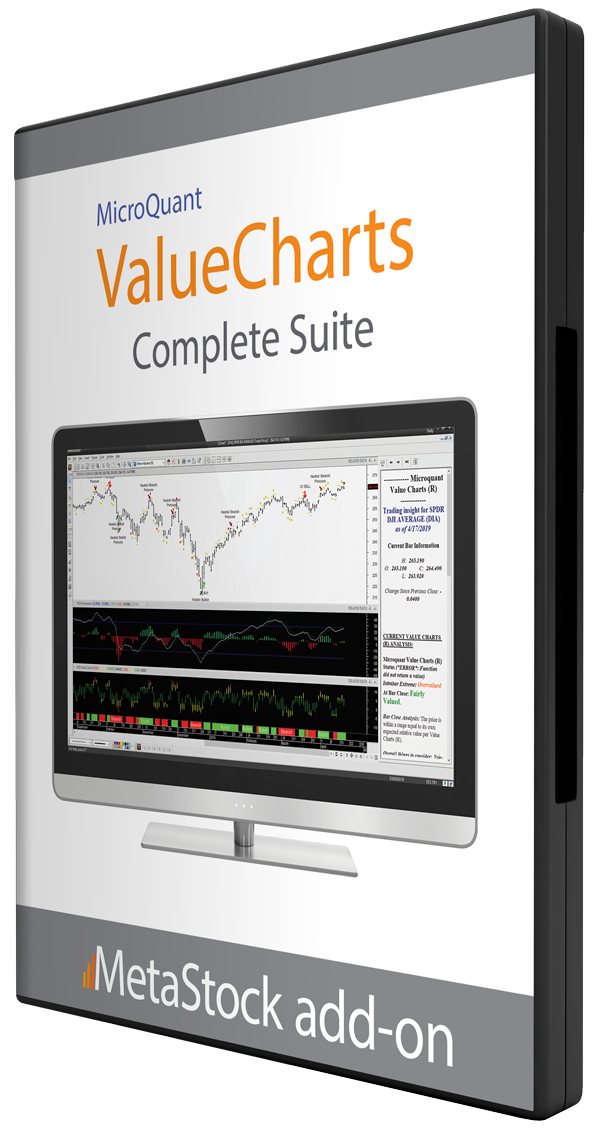Where do you get your tips for your next stock purchase? Perhaps you hear trading tips from friends at work. Maybe you use an investment newsletter. If you’ve been trading for any length of time, you’re probably getting enough email recommendations in your inbox offering trading ideas that sound at least a little interesting.
The problem with all of these sources of information is, are they accurate? And even more importantly, are they appropriate for your own investment needs?
Sure, “The Next “Biggest Pot Stock” makes a great headline, but is it going to get you what you need in your portfolio right now? Bob in Accounting may be bragging about buying TSLA long ago, but does that mean it’s time to buy TSLA today? Even for genuine well-intended recommendations, it’s hard to know whether buying now is still a good deal.
Plus, trading can be very personal, in that each of us has our own goals, needs, capital, risk aversion, and time – both in how much time we can spend trading, as well as how much time we have left before we need to start accessing our growing trading profits. If you’re just starting out trading, and have lots of cash that you don’t mind taking a high risk on, then maybe the high-risk approach of trading on rumors or speculation is ok for you.
But many traders would rather preserve their capital and avoid a gambling mentality when it comes to their hard-earned money. Even someone that’s starting out would likely have a huge advantage if they were to start trading the right way, never learning bad habits to begin with, and getting steady income in their account.
And if you’re someone that’s struggled in the past with generating a regular income, there’s a simpler way to give yourself a fighting chance to profitably trading the markets. Are you a seasoned trader? Just about any trader who’s been around long enough is wise to make sure they’re staying on top of their strategies, adjusting them as needed as markets evolve.
For all traders, remember that your time is valuable. If you can generate more income with less time, than you have more time to spend doing other things you love, like spending time with family and friends, or having the time to just relax and have fun.
How can we find the best trading opportunities while using less time?
The answer: By using proven rules-based filters with a powerful scanner.
First, let’s talk briefly about trading with rules. Trading systems have requirements, that define a setup, which must be valid before we can take a trade.
Not every trader has a system that they follow, but if they’re not sticking to the rules of a system, they may not be a trader for long. So let’s just dismiss trading by emotion, and instead, define a clear methodology to find and execute winning trades.
Now this might sound a bit dry, using words like “methodology”, or even talking about “rules”. Don’t worry, we can make it really easy to understand and follow, and if you stick with this article to the end, you’ll be surprised to hear how simple finding great trading opportunities can be! Many traders are surprised that when they use a system, it actually makes trading easier, and even fun.
Identifying A Valid Trading System
To get a methodology that’s going to work, let’s avoid reinventing the wheel and use one that’s already proven. You may have read our other articles about value-based trading, and if you’ve got a foundation there, you’re ready to start. To make sure we’re all on the same page, let’s quickly review the key concepts of value-based trading using the patented Value Charts® approach.
First, recognize that price alone doesn’t tell us whether a stock or other market is reasonably priced. You may think that a $3 stock is a good value, but without knowing the history and potential of that market, you may be overpaying even if it’s a low price. After all, $1,000 of a $3 stock takes the same amount of money from your account as $1,000 of a $100 stock – they both cost $1,000.
What we need to know is whether we’re getting the stock at a good value. If a market is currently overvalued, then we’re likely paying too much for it – regardless of price. Also, if a market is undervalued, then a stock can be a great value, even if it has a higher price.
Having a way to identify whether a market is overvalued or undervalued lets us make wise choices when we select our trades. This is where Value Charts® helps us pinpoint when it’s best to buy into a market. When a market is undervalued, it’s as if it’s on sale. And why would you ever want to pay full price, let alone pay more than what the market is worth, when you can wait to buy it on sale?
Value Charts® can tell us when price is undervalued, and even significantly undervalued, so we can know when we’re buying the market at a discount. And, since Value Charts® can equally tell us when a market is overvalued, we can also know the precise time to sell.
With Value Charts®, we can buy when markets are undervalued, and sell when markets are overvalued. We buy at a discount, and sell at a premium. This is how we can generate income into our account, and it’s the foundation of our strategy, clean and simple. We look through watchlists of symbols, and find markets that are undervalued for potential purchase. When we find a stock we like that’s undervalued, we add it to our portfolio. How do we know when to sell? We monitor the valuation of each stock in our portfolio using Value Charts®, and when they’re overvalued, we can sell them with confidence.
So now we have a methodology, or system, that has rules that we can follow. But we did say that our time was important, right? And perhaps you want to be able to search beyond just a handful of markets that are on your watchlist. Is there a way we can become more efficient in our searching?
Accelerating Your Potential with MetaStock Scans
Here’s where it gets really interesting. With the power of MetaStock’s Explorer scanning tool, we can automate our search beyond our manually-created watchlists. You’ll soon see that you have the power to search across the entire stock market for trading opportunities in a fraction of the time it would take to work through even a short hand-picked watchlist.
Six Explorer scans are included in the Value Charts® Add-On for MetaStock. Four of the scans are designed specifically around the Value Charts® approach, as follows:
- MQ Value Charts Sig Undervalued
- MQ Value Charts Ext Undervalued
- MQ Value Charts Sig Overvalued
- MQ Value Charts Ext Overvalued
The first two scans identify markets that are prime candidates for buying. The last two are designed to identify the best markets to sell. We use these scans to identify undervalued markets that we can buy, as well as markets that are overvalued that we can sell.
When we scan using these Explorers in MetaStock, we can identify a subsection of a market, and then identify just those stocks in that subsection that meet our system’s requirements. For example, we may want to scan the stocks that make up the S&P 500, the top 500 largest companies in the stock market based on their market capitalization. By scanning this one subsection, we can search about 80% of the American market’s equity to find which markets are ready to buy or sell. On the other hand, if you’re more interested in Mid-caps, we can scan across that market subsection to find opportunities. Only interested in Healthcare stocks? You can scan just that market subsection for opportunities.
In the Power Console image shown here, we have selected the MQ Value Charts® Ext Undervalued scan to efficiently search for buying opportunities across the entire NASDAQ exchange. When we click the “Start Exploration” button, we will identify all of the opportunities that currently exist across all 3,287 NASDAQ markets – in one click.
In just a few moments, you’ll be presented with a list of potential buying candidates that meet our system requirement of being extremely undervalued. You’ll even get a score that appears to let you know which markets are the most undervalued within the results. And yes, you can sort by that column to save you even more time.
You can see the results of a recent search shown at left, where we have narrowed down the huge NASDAQ list to 37 candidates. You can click on any row to bring the selected market up for further review.
For those that have the knowledge and ability to short a market, we are no longer limited to buying undervalued markets. Any of the 4 scans can be used to enter a position. Scans 1 and 2 can be used to “go long” in a market, and scans 3 and 4 identify opportunities to “go short”. Traders who have to the ability to go short don’t really care which way a market moves. They take advantage of movement regardless of direction, and the powerful Value Charts® scans provide information for shorting just as easily as they do for traders who want to buy.
It’s easy to see how scans 1 & 2 differ from 3 & 4, but how does scan 1 differ from 2, and how does scan 3 differ from 4? To explain this, it’s helpful to know that Value Charts® scores value on a fluid scale. The scale has thresholds that we use to identify variations of value. This way, we can identify a stock that is more overvalued than another. For example, Stock A may be overvalued, while stock B may be even more overvalued.
In Value Charts® terminology, we use colors to identify being overvalued. Green is “fair valued”, yellow is “Moderately Overvalued” or “Moderately Undervalued”, and red is used to identify “Significantly Overvalued” or “Significantly Undervalued” markets. Scans 1 and 3 identify markets that are in the “red” zone of “Significantly Overvalued” or “Significantly Undervalued”. For the Value Charts® MetaStock Explorer scans, an “Extreme” value zone has been identified to provide traders with even more insight, which identifies markets that are even deeper into the red zone.
Scan 1 can identify all Markets in the Significantly Overvalued red zone. With scan 2, we are identifying markets even more overvalued. So scan 1 will include all markets in the overvalued red zone, but scan 2 will find just those that are at the extremes of Significantly Overvalued. So, the “extreme” scans 2 and 4 will generate fewer “hits” than 1 and 2, as they’re more exclusive. The concept is that the more extreme the overvalue and undervalue is, the more likely that a market is ready to reverse. You get the “best of the best”.
And that’s how we can use our scans. If we want to look for buying opportunities, we can scan our markets to find the most undervalued stocks. Once we have a list of stocks that meet the scan requirements, we can walk through the list to find the best of that list.
The Best of the Best
How can we tell what makes one of the finds on our list better than another? That’s where we can use MQ Momentum to help us identify markets that are ready to move. Other previously-published articles explain how to use MQ Momentum to pinpoint exceptional entries and exits. If you read those articles, you will learn that all of the Base Camp Trading instructors use MQ Momentum on almost every chart. And while understanding MQ Momentum is a great skill to have, you may be happy to learn that we’ve done even more of the work for you to further simplify your scanning.
In the Value Charts® Add-On for MetaStock, you don’t have to be an expert at reading MQ Momentum to find the best stocks to trade. In fact, it’s even simpler than the scans we’ve already discussed here.
So far, you’ve learned about four Explorer scans. We mentioned that there are six included with the Value Charts® Add-On. The last two are even more advanced than the scans we’ve covered so far, and these last two are easier to use.
If you’ve seen the Value Charts® Add-On in action, you likely noticed that “VC Buy” and “VC Sell” signals appear on the chart. These signals frequently identify prime entries to buy and sell a market. These signals incorporate the patented Value Charts® technology in combination with MQ Momentum to identify specific buy and sell signals. That is, they use information about the Value of a market along with the specific power and movement behind a market to offer signals.
We’ve built this powerful capability into our most advanced scanners:
- MQ Value Charts® VC Buy
- MQ Value Charts® VC Sell
With these 2 simple-to-use scans, we have the ability to search across any of MetaStock’s expansive market subsections to quickly identify clear Buy and Sell signals. With one scan, we can search across even thousands of markets to find the best entries to help you achieve success in the markets.
Making Value Charts® Trading A Part of Your Trading Routine
If you’ve been looking for a way to decrease the amount of time needed to identify what markets to buy and sell, you’ve finally found it. The combination of MetaStock and Value Chart’s® custom scanners can help you quickly scan thousands of markets to find the best of the best.
With these six easy to use scans, you have the opportunity to quickly find just the markets that are ripe for opportunity. You can focus on value to provide a choice of markets to review for entry, or you can let the powerful VC Buy and VC Sell Scans do the work for you.
By now, you recognize that these scans can minimize the time needed to find the best opportunities across entire markets, and produce actionable, systematic suggestions to consider for your portfolio. With the results of these scans, you can spend your time doing the final analysis in your trading rather than clicking endlessly through long lists trying to find something to trade. No longer do you need to rely on rumors and speculation, or on the wild suggestions from sales-based emails. You finally have a system that you can understand, that is always current, and that you can make work for you.
If you already own the Value Charts® Add-On for MetaStock, make sure you’re taking advantage of these powerful scans.
If you don’t yet have your copy, try it out today, risk free! With MetaStock’s 30-day Money Back Guarantee, you can experience the power first hand and prove to yourself that this simple approach can work for you. If you don’t already have the Value Charts® Add-On for MetaStock, click here to get started and find out what the patented Value Charts® capabilities can do for you.











0 Comments